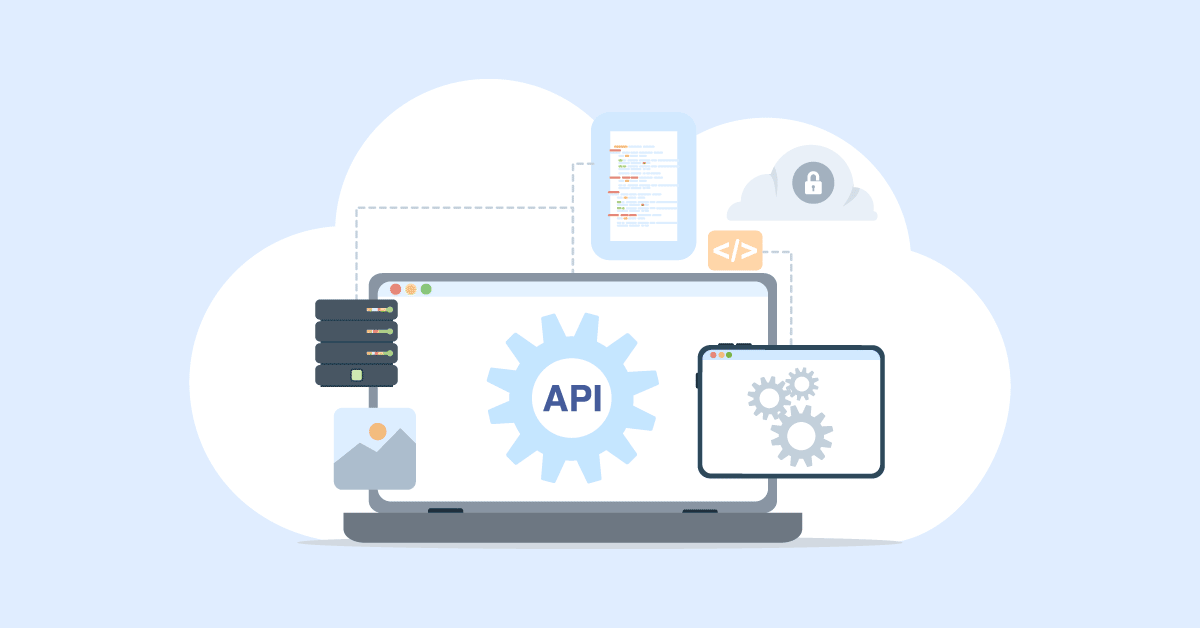Organizations face the challenge of managing a multitude of applications and systems to ensure seamless operations. However, the complexity of managing and exchanging data between these systems can hinder efficiency and productivity. This is where API integration comes to the rescue. Application Programming Interfaces (APIs) serve as the backbone of modern software communication, providing a standardized and efficient way for different applications to interact and share data. By leveraging the power of API integration, businesses can simplify their operations, streamline processes, and unlock a range of benefits that drive growth and success.
Aonflow iPaaS – Free for First 3 Months!
Build and run up to 1,500 transactions monthly with no cost. No payment info needed!
Streamlining Data Exchange
Data is at the heart of every business operation. API integration plays a crucial role in enabling efficient data exchange between various software systems. By integrating APIs, businesses can automate data synchronization, eliminate manual data entry, and ensure data consistency across different platforms. This streamlining of data exchange not only saves time but also reduces the risk of errors and ensures a single source of truth for data across multiple systems.
For example, integrating a Customer Relationship Management (CRM) system with an email marketing tool enables seamless transfer of customer data, allowing businesses to create targeted email campaigns based on customer behavior and preferences. This integration eliminates the need for manual export and import of customer lists, ensuring that marketing efforts are always up-to-date and relevant.
Similarly, connecting e-commerce platforms with inventory management systems ensures real-time inventory updates and prevents overselling or stockouts. When a customer places an order on an e-commerce website, the API integration automatically updates the inventory levels, ensuring accurate information for both customers and the internal team. This real-time synchronization helps businesses avoid selling products that are out of stock, providing a better customer experience and reducing the risk of negative reviews or cancellations.
Enhancing Efficiency through Process Automation
Businesses often perform repetitive tasks that are time-consuming and prone to human error. API integration empowers organizations to automate these processes, leading to improved efficiency and productivity. By leveraging APIs, businesses can connect different systems and enable a seamless flow of data and actions, reducing manual intervention and freeing up valuable resources to focus on more strategic initiatives.
For instance, integrating payment gateways with accounting systems automates the recording of transactions and eliminates the need for manual data entry. This integration streamlines financial processes, reduces errors, and enables faster reconciliation. Whenever a customer makes a payment, the API integration automatically captures the transaction details, updates the accounting system, and generates invoices or receipts. This automation not only saves time but also minimizes the risk of data entry errors, ensuring accurate financial records.
Another use case of API integration for process automation is integrating customer support platforms with ticketing systems. By automatically creating support tickets based on customer inquiries received through various channels such as email, chat, or social media, businesses can ensure prompt and efficient resolution of customer issues. This integration eliminates the need for manual ticket creation, reduces response times, and improves overall customer satisfaction.
Enabling Seamless Collaboration
Collaboration is vital for effective teamwork within an organization. API integration allows different software applications to work together harmoniously, fostering seamless collaboration among teams. By connecting APIs, businesses can facilitate the exchange of information, streamline workflows, and enhance cross-functional collaboration.
For example, integrating project management tools with communication platforms enables project teams to communicate, share files, and track progress without switching between multiple applications. When team members are working on a project, they can easily access project-related information, such as tasks, deadlines, and updates, within the communication platform itself. This integration improves collaboration, eliminates information silos, and enhances overall project efficiency.
Similarly, connecting Human Resources (HR) systems with employee productivity tools enables seamless access to employee data, facilitating better resource management and collaboration. For instance, integrating an HR system with a time-tracking tool allows employees to log their working hours directly from the time-tracking interface. This integration simplifies the process for employees and provides accurate data for HR teams for tasks such as payroll processing and attendance tracking.
Aonflow is the leading integration platform.
You can kick-start by integrating your first-ever workflow in just a matter of minutes.
Improving Customer Experience
Providing exceptional customer experiences is a key differentiator for businesses in today’s competitive market. API integration plays a significant role in enhancing customer experience by enabling data-driven personalization and smoother interactions. By connecting APIs from different systems, businesses can create a holistic view of their customers, enabling them to deliver personalized experiences and build stronger relationships.
For instance, integrating CRM systems with customer service platforms allows customer support agents to access relevant customer data during interactions, leading to personalized and efficient support. When a customer contacts the support team, the agent can quickly retrieve information such as past purchases, preferences, or previous interactions, enabling a more personalized and tailored conversation. This integration eliminates the need for customers to repeat information, reduces resolution times, and improves overall customer satisfaction.
Furthermore, connecting e-commerce platforms with shipping carriers enables real-time shipping calculations, order tracking, and delivery notifications, enhancing transparency and satisfaction for customers. When a customer places an order, the API integration automatically calculates the shipping cost based on the carrier’s rates and provides accurate delivery estimates. Customers can also track their orders in real time and receive notifications about the status of their shipments. This integration improves the overall customer experience by providing visibility and timely updates, ultimately leading to increased customer loyalty and repeat business.
Ensuring Scalability and Flexibility
API integration plays a crucial role in ensuring that businesses can scale and adapt to changing requirements. By integrating APIs, organizations can easily connect different systems and add new functionalities without the need for extensive development efforts. This flexibility allows businesses to respond quickly to market changes, seize new opportunities, and stay ahead of the competition.
For example, integrating cloud storage services with document management systems enables seamless document sharing and collaboration across teams, regardless of their physical location. When employees are working on a project or sharing files, they can easily access and collaborate on documents stored in the cloud directly from the document management system. This integration simplifies document management, improves version control, and enhances collaboration among team members.
Moreover, connecting marketing automation tools with lead-generation platforms allows businesses to capture, qualify, and nurture leads efficiently. When a lead is generated through various channels such as website forms or social media campaigns, the API integration automatically captures the lead’s information and transfers it to the marketing automation tool. This integration enables businesses to automate lead nurturing processes, such as sending personalized emails or triggering targeted campaigns based on lead behavior. By leveraging API integration, businesses can scale their lead generation efforts, streamline marketing processes, and maximize their return on investment.
API Integration: Leveraging Data Insights for Business Growth
In addition to streamlining operations, API integration also empowers businesses to leverage valuable data insights for growth and strategic decision-making. By connecting APIs from various systems, businesses can unlock the power of data and gain actionable insights that drive innovation and competitive advantage.
For example, integrating customer feedback platforms with analytics tools allows businesses to analyze customer sentiment and preferences. This integration enables businesses to collect feedback from multiple channels, such as surveys or social media, and consolidate the data in a central analytics platform. By analyzing this data, businesses can identify trends, uncover customer pain points, and make data-driven decisions to improve products, services, and overall customer experience.
Furthermore, integrating APIs from sales systems with business intelligence tools provides valuable sales and revenue insights. Businesses can gain a comprehensive view of sales performance, track key performance indicators (KPIs), and generate detailed reports and dashboards. This integration enables businesses to identify sales trends, forecast revenue, and optimize sales strategies based on data-driven insights.
API integration also plays a crucial role in leveraging data for marketing purposes. By integrating APIs from various marketing platforms, such as social media management tools, advertising platforms, and customer analytics systems, businesses can create a holistic view of their marketing efforts. This integration allows businesses to track marketing campaigns, measure their effectiveness, and optimize marketing spend based on real-time data. By leveraging data insights, businesses can target their marketing efforts more effectively, reach the right audience, and maximize return on investment.
Moreover, API integration enables businesses to harness the power of artificial intelligence (AI) and machine learning (ML) algorithms. By integrating APIs from AI and ML platforms, businesses can leverage advanced data analysis techniques to uncover patterns, predict outcomes, and automate decision-making processes. For instance, integrating an AI-powered chatbot with a customer service platform enables businesses to automate customer interactions, provide instant responses, and even perform basic troubleshooting. This integration not only improves customer service efficiency but also frees up human resources to focus on more complex and high-value tasks.
Endnote
API integration is not only about simplifying business operations but also about leveraging the power of data for growth and strategic decision-making. By connecting APIs from various systems, businesses can unlock valuable data insights, drive innovation, and gain a competitive edge. Whether it’s analyzing customer feedback, tracking sales performance, optimizing marketing campaigns, or harnessing AI and ML capabilities, API integration empowers businesses to leverage data for growth, improve customer experiences, and achieve long-term success in today’s data-driven business landscape. Embracing API integration is not just a technical choice, but a strategic imperative for businesses looking to thrive in the digital era.
Aonflow iPaaS – Free for First 3 Months!
Build and run up to 1,500 transactions monthly with no cost. No payment info needed!


